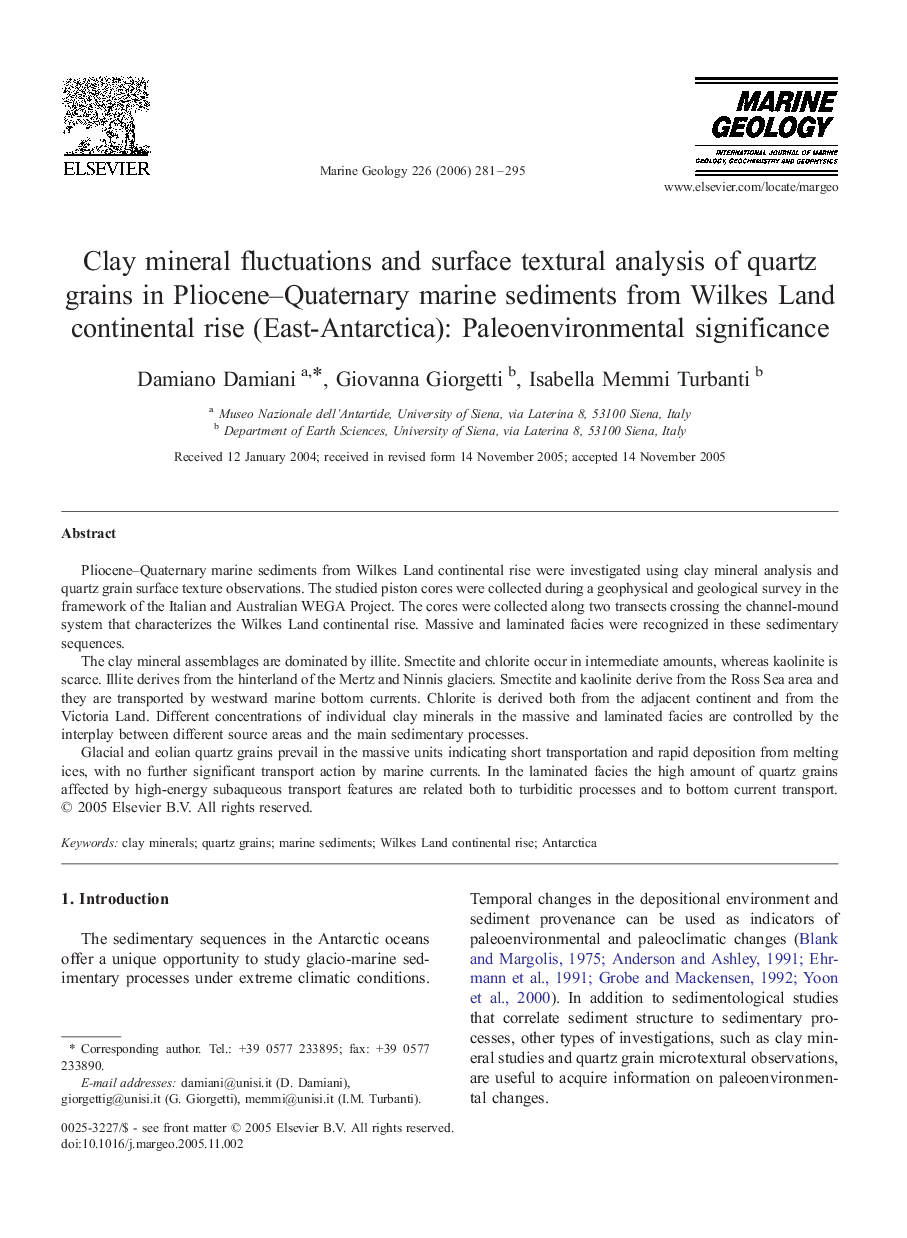| Article ID | Journal | Published Year | Pages | File Type |
|---|---|---|---|---|
| 4719865 | Marine Geology | 2006 | 15 Pages |
Pliocene–Quaternary marine sediments from Wilkes Land continental rise were investigated using clay mineral analysis and quartz grain surface texture observations. The studied piston cores were collected during a geophysical and geological survey in the framework of the Italian and Australian WEGA Project. The cores were collected along two transects crossing the channel-mound system that characterizes the Wilkes Land continental rise. Massive and laminated facies were recognized in these sedimentary sequences.The clay mineral assemblages are dominated by illite. Smectite and chlorite occur in intermediate amounts, whereas kaolinite is scarce. Illite derives from the hinterland of the Mertz and Ninnis glaciers. Smectite and kaolinite derive from the Ross Sea area and they are transported by westward marine bottom currents. Chlorite is derived both from the adjacent continent and from the Victoria Land. Different concentrations of individual clay minerals in the massive and laminated facies are controlled by the interplay between different source areas and the main sedimentary processes.Glacial and eolian quartz grains prevail in the massive units indicating short transportation and rapid deposition from melting ices, with no further significant transport action by marine currents. In the laminated facies the high amount of quartz grains affected by high-energy subaqueous transport features are related both to turbiditic processes and to bottom current transport.
